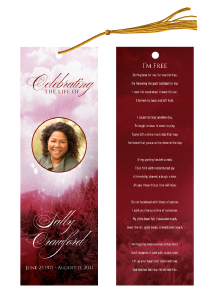Death announcements serve as a formal way to inform friends, family, and the community about the passing of a loved one. They not only share the sad news but also provide essential details about the deceased and any upcoming memorial services. Writing a death announcement can be a daunting task during a time of grief, but it’s an important step in honoring and remembering the departed.
A well-crafted death announcement helps to convey the appropriate tone and respect for the deceased. It typically includes the full name of the deceased, their age, date and place of passing, and details about the funeral or memorial service. Some families also choose to include a short biography or notable achievements of the deceased to celebrate their life.
Understanding the elements of a respectful death announcement is crucial to ensuring that it is both thoughtful and informative. This guide will walk you through the process, offering tips and examples to help you create a meaningful announcement. Whether you’re looking for traditional wording or something more personalized, our aim is to make this task a little easier for you during a challenging time.
At DisciplePress, LLC, we understand the importance of creating lasting tributes. <a href="https://disciplepress.com”>Order funeral & memorial prints today to ensure your announcements are professionally crafted and beautifully presented.
Understanding the Purpose of Death Announcements

Death announcements serve multiple purposes, each significant in the process of mourning and remembrance. At their core, they function as a means of communication, informing a wide circle of acquaintances about the death of a loved one. This is especially important in today’s interconnected world, where friends and family may be spread across different regions or countries.
Beyond merely notifying, death announcements also offer a way to honor and memorialize the deceased. By sharing details about their life, accomplishments, and character, the announcement becomes a tribute, celebrating the legacy they leave behind. It provides an opportunity to highlight the positive impact they had on others and the community.
Additionally, these announcements often include information about memorial services, funerals, or celebration of life events. This helps to coordinate attendance and ensure that everyone who wishes to pay their respects has the necessary details. Such announcements can also include requests for donations to charitable organizations in lieu of flowers, aligning with the deceased’s values or causes they supported.
Moreover, death announcements can serve as a starting point for the grieving process. They acknowledge the reality of loss and invite others to share in the grief and support each other. This communal aspect of mourning is vital for emotional healing, as it provides solace and understanding from those who have experienced similar losses.
Understanding these purposes can help you craft an announcement that is not only informative but also deeply respectful and meaningful, reflecting the true essence of the person who has passed.
Essential Elements of a Death Announcement

Crafting a respectful and thoughtful death announcement involves including several *essential elements* that convey the necessary information while honoring the memory of the deceased. Here are the key components to consider:
- Name and Age: Clearly state the full name of the deceased, along with their age at the time of passing. This helps to avoid any confusion, especially if they were known by different names or nicknames.
- Date of Passing: Include the exact date of their death. This detail is crucial for records and for informing those who may wish to attend memorial services.
- Brief Biography: Provide a short overview of the deceased’s life. Highlight important milestones, achievements, and personal qualities. This section should reflect their character and contributions to their family, friends, and community.
- Service Details: Offer clear information about the funeral or memorial service. Include the date, time, and location, as well as any specific requests such as dress code or thematic elements that reflect the deceased’s personality.
- Surviving Family Members: List the immediate family members who have survived the deceased. This can include spouses, children, parents, and siblings. This acknowledgment shows respect and offers support to the grieving family.
- Charitable Contributions: If applicable, mention any preferred charities for donations in memory of the deceased. This can be a meaningful way to continue their legacy and support the causes they cared about.
- Personal Message: Add a personal note or message from the family. This can be a heartfelt expression of gratitude to those offering support, or a few words that capture the essence of the loved one who has passed.
Including these elements ensures that the death announcement is comprehensive and thoughtful, providing all the necessary information while honoring the deceased in a meaningful way.
Tips for Writing Respectful Death Announcements

Writing a respectful death announcement can be a delicate task. Here are some tips to help you craft a thoughtful and dignified message:
- Be Concise: While it’s important to share key details and honor the deceased, try to keep the announcement brief. A concise message is easier to read and ensures that the most important information is communicated clearly.
- Use Appropriate Language: Choose words that are respectful and sensitive to the emotions of those who will be reading the announcement. Avoid overly casual language or jargon. Phrases like “passed away” or “left us” can be more comforting than blunt terms.
- Verify Facts: Double-check the accuracy of all details, including dates, names, and locations. Incorrect information can cause confusion and distress for those who are already grieving.
- Consider the Audience: Think about the people who will be receiving the announcement. Use language and content that will be respectful and comforting to them. This may include considering cultural or religious sensitivities.
- Maintain Privacy: While it’s important to share certain details, avoid including overly personal or sensitive information. Respect the privacy of the deceased and their family.
- Express Gratitude: If appropriate, include a brief message of thanks to those who have offered support and condolences. This can help to foster a sense of community and shared mourning.
- Seek Input: If you’re unsure about what to write, don’t hesitate to ask for help from close family members or friends. They can provide valuable perspectives and ensure that the announcement reflects the wishes of those most affected by the loss.
- Proofread: Before finalizing the announcement, take the time to carefully proofread it. Look for any spelling or grammatical errors. A well-written announcement shows respect and care.
By following these tips, you can create a death announcement that is both respectful and meaningful, providing comfort to those who are mourning.
Examples of Thoughtful Death Announcements

Crafting a thoughtful death announcement can be challenging. To assist you, here are some examples that balance brevity with heartfelt sentiment:
- Traditional Announcement:
“It is with great sadness that we announce the passing of John Doe on January 15, 2023. John was a beloved husband, father, and friend. A memorial service will be held at St. Mary’s Church on January 20th at 3 PM. In lieu of flowers, donations can be made to the Cancer Research Foundation.“ - Personalized Announcement:
“Our hearts are heavy as we share the news of Jane Doe’s passing on February 10, 2023. Jane brought joy and laughter to everyone who knew her. She will be deeply missed by her family and friends. A celebration of her life will be held at her favorite park, Riverside Gardens, on February 15th at 11 AM. Please wear bright colors in her honor.“ - Brief Announcement:
“We regret to inform you of the passing of Robert Smith on March 5, 2023. A private service will be held for immediate family members. Thank you for your thoughts and prayers during this time.“ - In Memory of a Public Figure:
“The community mourns the loss of Dr. Emily Brown, who passed away on April 18, 2023. Dr. Brown was a pioneer in her field and a cherished mentor to many. A public memorial service will be held at the City Hall Auditorium on April 25th at 2 PM. Donations in her memory can be made to the University Scholarship Fund.“ - Religious Announcement:
“With deep sorrow, we announce that Michael Johnson was called home to be with the Lord on May 12, 2023. His faith was an inspiration to all who knew him. A funeral mass will be held at Sacred Heart Church on May 17th at 10 AM. In lieu of flowers, please consider donating to the church’s outreach program.“
These examples illustrate different approaches to writing a death announcement, each tailored to honor the unique life and legacy of the deceased. Use them as inspiration to craft a message that feels right for your loved one and your audience.
Common Mistakes to Avoid in Death Announcements

When writing a death announcement, it’s easy to make mistakes in the midst of grieving. Here are some common mistakes to avoid to ensure the announcement is respectful and clear:
- Omitting Key Details:
Ensure that you include essential information such as the full name of the deceased, date of passing, and details of any memorial services. Missing these critical details can lead to confusion and additional stress for those who wish to pay their respects. - Overloading with Information:
While it’s important to provide necessary details, avoid overloading the announcement with excessive information. Keep it concise and focused on the most important aspects, such as the date, time, and location of the service, and any special requests from the family. - Using Inappropriate Language:
Maintain a tone of respect and sensitivity throughout the announcement. Avoid slang, overly casual language, or phrases that might come across as insensitive. Remember, this is a formal notification that will be shared with a wide audience. - Neglecting to Proofread:
Proofreading is crucial to avoid errors that could detract from the message. Check for spelling, grammar, and punctuation mistakes, and ensure that all names and dates are correct. A well-proofread announcement reflects the care and respect you hold for the deceased. - Ignoring Cultural and Religious Sensitivities:
Be mindful of any cultural or religious customs that should be observed in the announcement. This includes appropriate language, rituals, and traditions that may be important to the family and community.
By being aware of these common mistakes, you can craft a death announcement that is both respectful and informative, honoring your loved one appropriately.
Need assistance with funeral and memorial prints? <a href="https://disciplepress.com”>Order funeral & memorial prints today to ensure your announcements and programs are professionally handled.
 Free Shipping Over $50
Free Shipping Over $50  888-432-8363
888-432-8363


 Obituary/Programs
Obituary/Programs No-Fold Memorial Programs
No-Fold Memorial Programs 4 Page Funeral Programs
4 Page Funeral Programs 8 Page Memorial Programs
8 Page Memorial Programs 12 Page Funeral Programs
12 Page Funeral Programs 16 Page Funeral Programs
16 Page Funeral Programs 20 Page Funeral Programs
20 Page Funeral Programs Tri-Fold Funeral Programs
Tri-Fold Funeral Programs Complete Memorial Packages
Complete Memorial Packages
 Cards & Bookmarks
Cards & Bookmarks Saint Prayer Cards
Saint Prayer Cards Folded Memorial Cards
Folded Memorial Cards Folded Holy Cards
Folded Holy Cards Memorial Bookmarks
Memorial Bookmarks Thank You Cards
Thank You Cards Share-A-Memory Cards
Share-A-Memory Cards Memorial Magnets
Memorial Magnets
 Memorial Posters
Memorial Posters Guest Books
Guest Books Slide Shows
Slide Shows Memorial Fans
Memorial Fans Death Announcements
Death Announcements Take Away Keepsakes
Take Away Keepsakes
 Church Products
Church Products









